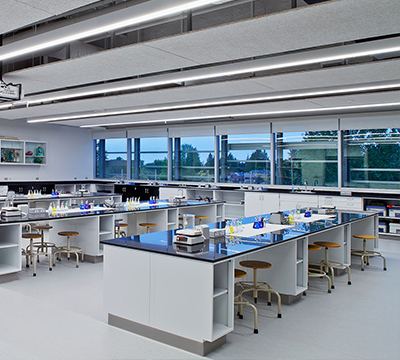The design and construction of laboratory furniture have undergone significant changes in recent years, with an increasing emphasis on sustainability and innovation. Modern lab furniture not only needs to meet functional requirements but also adhere to environmental and health standards. This article explores the variety of materials now being used in lab furniture that prioritize these concerns.
Eco-Friendly Materials
Recycled Plastics and Metals
One of the key elements in sustainable lab furniture is the use of recycled plastics and metals. These materials reduce waste and lower the environmental impact associated with manufacturing. For instance, recycled aluminum and steel are commonly used for frames and cabinetry, offering durability and resistance to chemicals.
Bamboo and Reclaimed Wood
Bamboo and reclaimed wood are also gaining popularity. Bamboo, being a rapidly renewable resource, provides strength comparable to traditional hardwoods but with a smaller ecological footprint. Reclaimed wood not only adds a unique aesthetic but also contributes to waste reduction.
Innovative Composites
Epoxy Resins
Epoxy resins, known for their robustness and chemical resistance, are widely used in the manufacturing of lab countertops. These resins can withstand high temperatures and corrosive substances, making them ideal for rigorous lab environments.
Phenolic Resins
Similarly, phenolic resins are another innovative material for lab furniture. They offer excellent chemical resistance and are lighter in weight compared to epoxy, easing the handling and installation process.
Enhancing Efficiency and Longevity
Antimicrobial Coatings
To enhance the longevity and hygiene of lab furniture, antimicrobial coatings are applied. These coatings prevent the growth of bacteria and mold, which is crucial in a lab setting where cleanliness is paramount.
Modular Design Elements
Modular design elements in lab furniture allow for easy reconfiguration and adaptability. This flexibility is not only cost-effective but also reduces the need for additional furniture, thereby minimizing resource consumption.

Cost and Quality Considerations
Durability and Maintenance Costs
When selecting materials for lab furniture, durability plays a crucial role in determining long-term maintenance costs. Materials like stainless steel and phenolic composites offer longevity, reducing the need for frequent replacements.
Budget-Friendly Options
For labs operating on tighter budgets, there are options like laminated particle board and medium-density fiberboard (MDF). While they might not offer the same level of durability as more premium materials, they provide a cost-effective solution for less demanding applications.
Conclusion
The choice of materials for lab furniture is critical for ensuring sustainability, efficiency, and functionality in modern laboratories. With the use of innovative and eco-friendly materials, lab environments can achieve higher standards of safety, durability, and environmental responsibility.